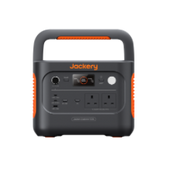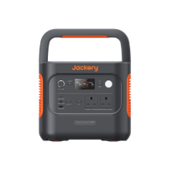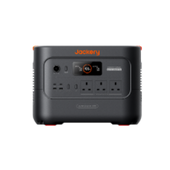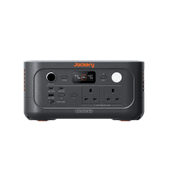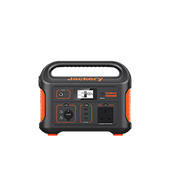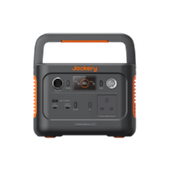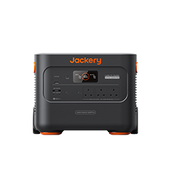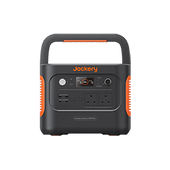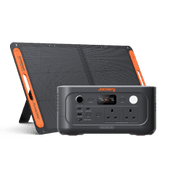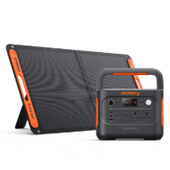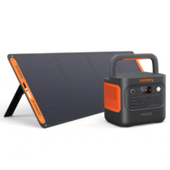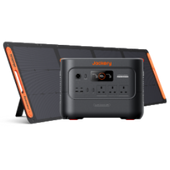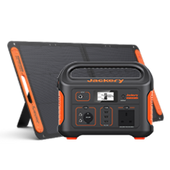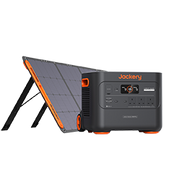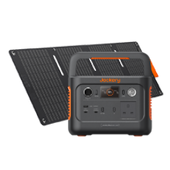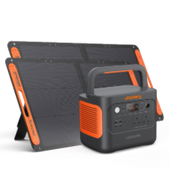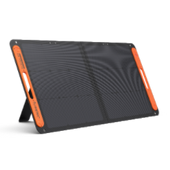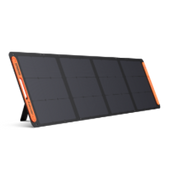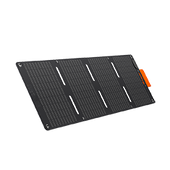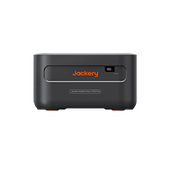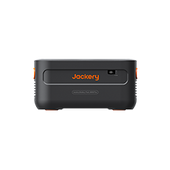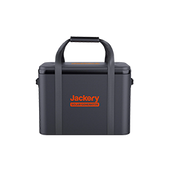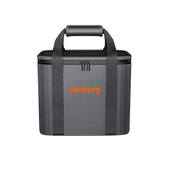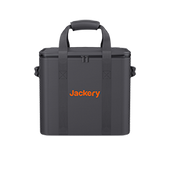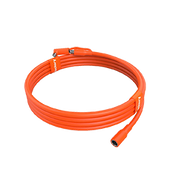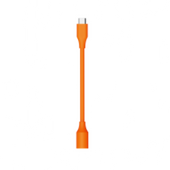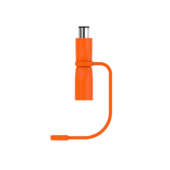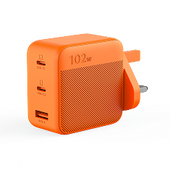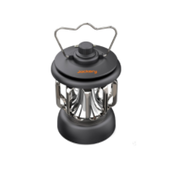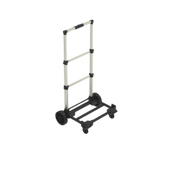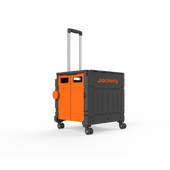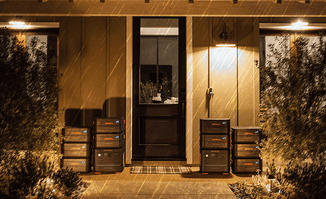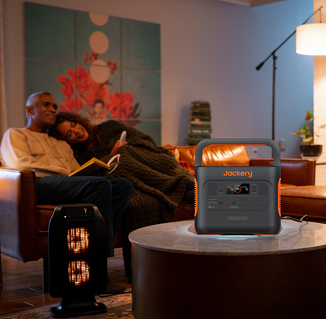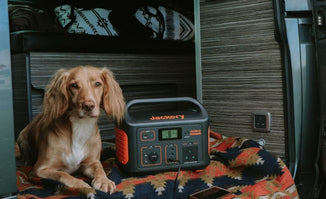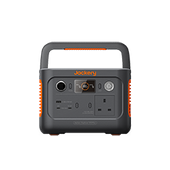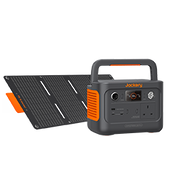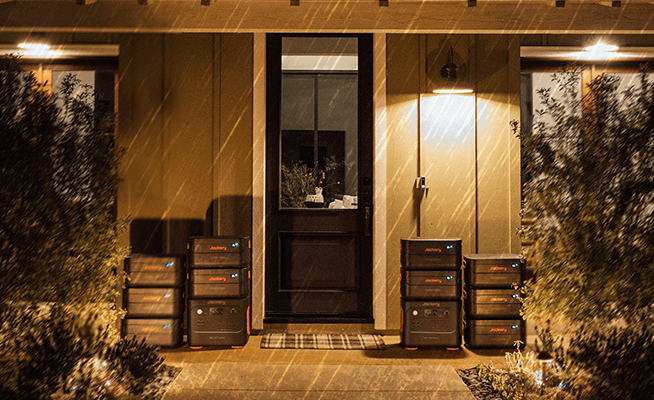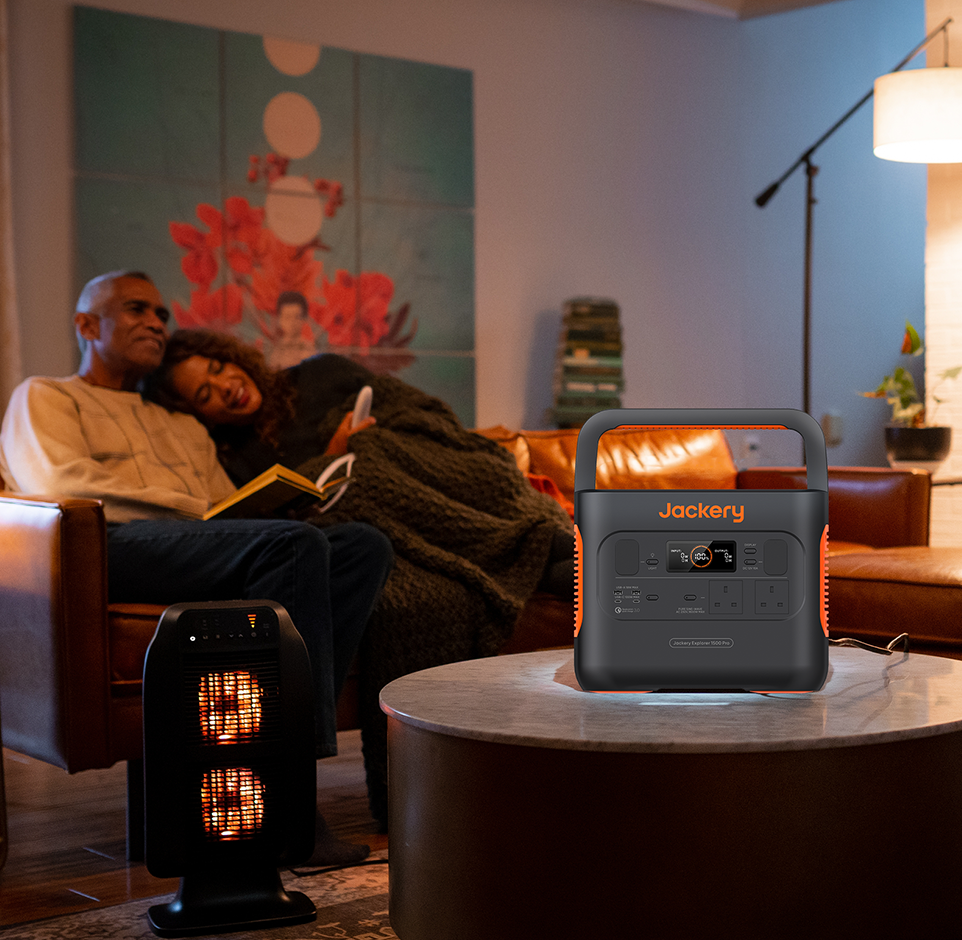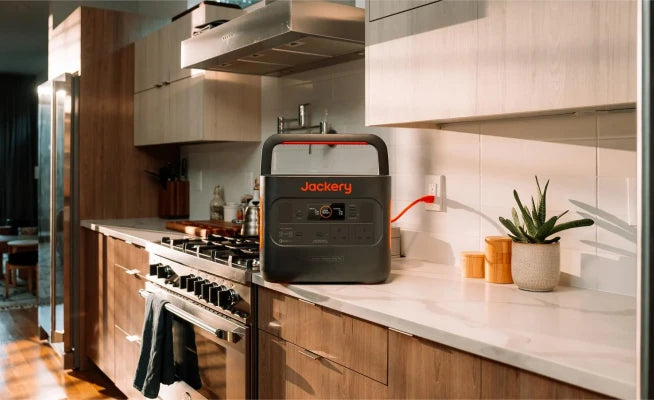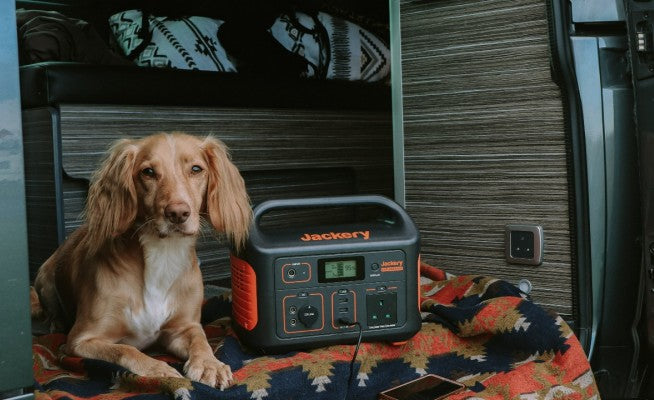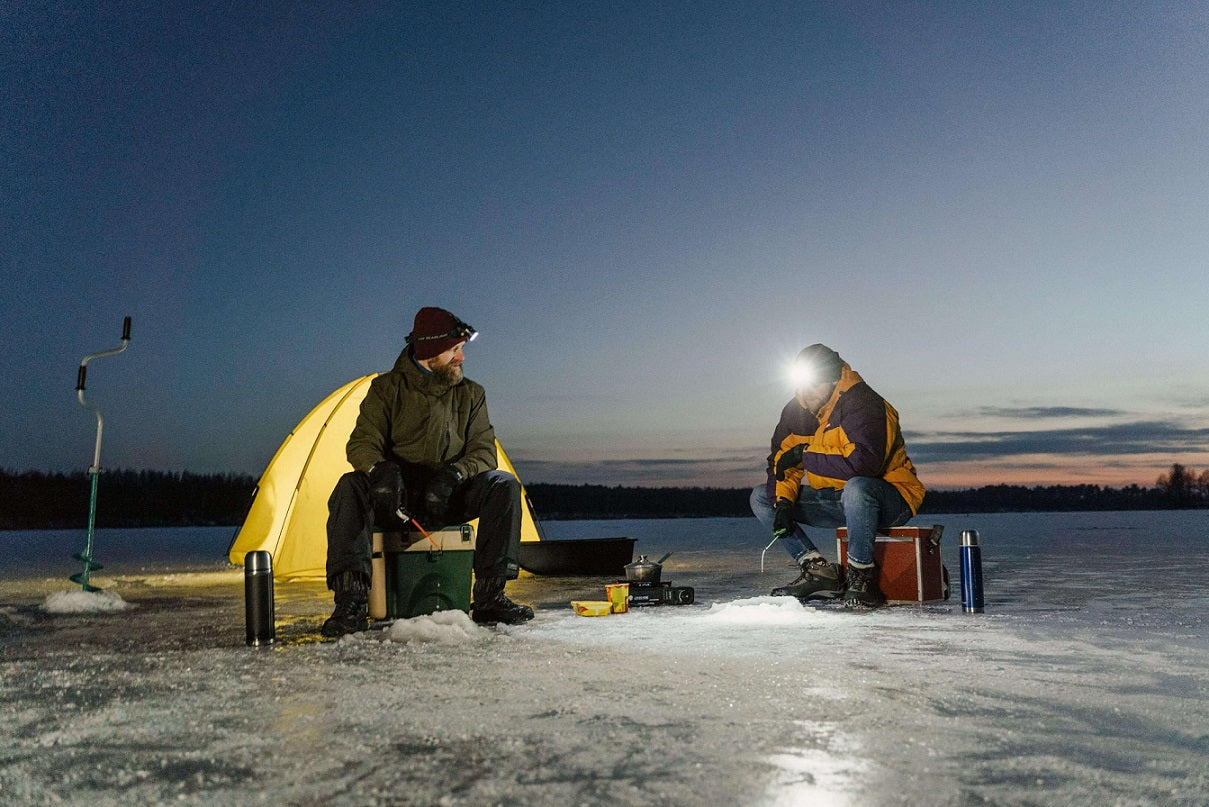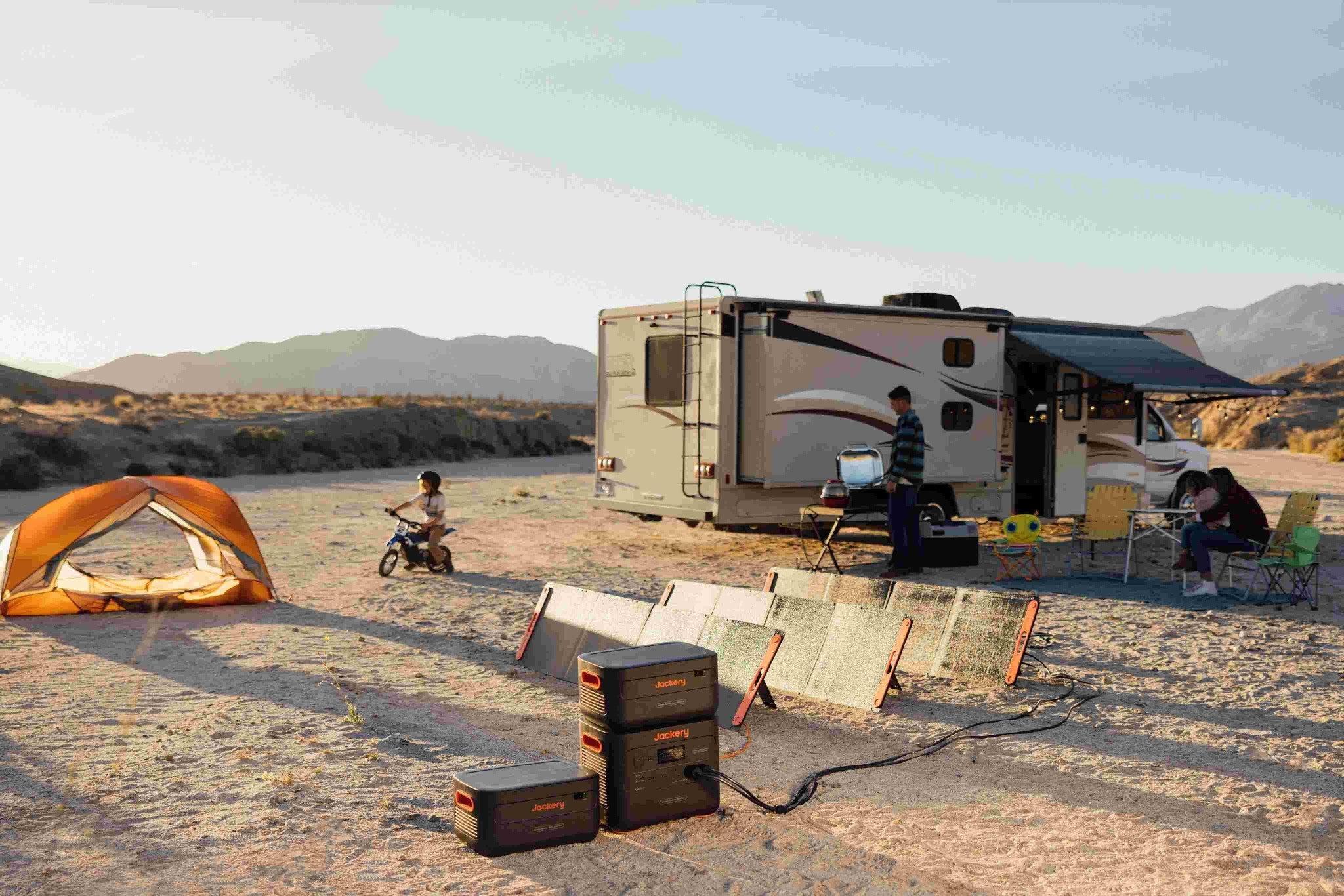Power banks have become indispensable companions for most modern travellers. If you comply with the relevant regulations, you can bring power banks on board. Generally, each passenger can carry up to 2 portable chargers.
The correct power bank can make travelling more comfortable and flexible. Therefore, it is undoubtedly a must-have artefact for every modern traveller. However, to ensure flight safety, there are strict regulations for carrying a power bank on a plane.
This guide will provide an overview of storm Darragh and strategies to prevent storm damage. Therefore, being familiar with the airline's rules on power banks is crucial before packing for your next trip. This guide will provide a detailed introduction and explanation of whether you can take a power bank on a plane. Also, we recommend Jackery Explorer 100 Plus, which has 99Wh and can be brought on planes with higher capacity.
|
Key Takeaways: |
|
- Power banks have become indispensable companions for most modern travellers. - Passengers can carry two power banks in carry-on baggage. However, the premise is that these power banks must be for personal use, and their capacity must not exceed 100 watt-hours (Wh). - Airlines require approval for power banks with capacities between 100Wh and 160Wh. - Many airlines explicitly stipulate that power banks cannot be checked in and can only be carried on board because safety risks cannot be ignored when checking power banks. - We recommend Jackery Explorer 100 Plus to take with you anywhere, even on a plane. |
Importance of Power Banks for Modern Travelers
In modern society, the development of science and technology has dramatically changed our lifestyle and travel habits. Power banks, the "energy supply station" for most electronic devices, have become indispensable companions for modern travellers. Here are a few reasons why power banks are essential to modern travellers:
Enhance Travel Experience
Modern travellers usually carry a variety of electronic devices for navigation, photography, entertainment, etc. However, the battery capacity of these devices is limited, mainly when used for a long time. Power banks can provide continuous power support for these devices, improving travel comfort and increasing the journey's fun.
Deal with Emergencies
Emergencies are unpredictable during travel. As an emergency power source, power banks can provide timely power support when a device runs out of power. For example, a power bank can charge your mobile phone to ensure you can quickly contact the outside world and get help. In addition, some power banks also have flashlight functions, which are very practical during power outages or walking at night, further enhancing travel safety.
Solve the Problem of Power Shortages
Travellers often go to some remote areas where the power supply may be insufficient or cannot guarantee basic charging needs. Power banks, like Jackery Portable Power Station, can ensure that travellers can complete necessary tasks, such as checking GPS devices, contacting family and friends, etc., which is especially important in outdoor activities such as hiking and camping.
Power banks are indispensable for travellers, whether for urban travel or outdoor adventures. In short, they are of irreplaceable importance to modern travellers. They solve the problem of power shortages during travel and improve travel's convenience, entertainment, and safety.
Can You Take a Power Bank on a Plane?
During a long flight or car ride, a power bank can provide power for entertainment devices, creating a more prosperous and more comfortable travel environment. In short, mobile power banks solve the power problem and enhance the traveller's experience. But can you take a power bank on a plane?
Here is a detailed guide on carrying a power bank on board:
In principle, you can carry a power bank on board, but there are a few things to note. The International Air Transport Association (IATA), representing and serving the aviation industry, has set guidelines that most airlines adopt. According to IATA regulations, passengers can carry two power banks in carry-on baggage.
However, the premise is that these power banks must be for personal use, and their capacity must not exceed 100 watt-hours (Wh). Therefore, most airlines usually allow power banks placed in carry-on but not checked baggage. The Jackery Explorer 100 Plus with 99Wh and the superior battery protection system enables the safety in case some potential risks.

Airlines require approval for power banks with capacities between 100Wh and 160Wh. Power banks with capacities of more than 160Wh can only be carried on board with the airline's approval, and usually in very special circumstances, such as medical equipment. These restrictions are in place to reduce the risk of fires in the cabin so that they can be addressed immediately.
In addition, these regulations are not arbitrary but are based on extensive research and real-world events that inform current safety standards.
Why Can't Power Banks Be Checked in?
Many airlines explicitly stipulate that power banks cannot be checked in and can only be carried on board because safety risks cannot be ignored when checking power banks. Here are the dangers that may arise from checking power banks:
Lithium Battery Spontaneous Combustion or Explosion
Most power banks contain lithium-ion batteries. Lithium batteries can easily cause spontaneous combustion in high-altitude environments when exposed to heat. Suppose the power bank is placed in checked luggage. In that case, the luggage is easily squeezed or collided in the narrow cargo hold space, which can easily cause lithium batteries to combust or explode spontaneously.
Short Circuit Fire
If a power bank short circuit occurs during the check-in process, it may also cause a fire. Due to the large number of items piled up in the cargo hold, once a fire occurs, it may spread rapidly and be difficult to control.
Emergency Challenging to Deal With
Unlike carry-on power banks, checked power banks are challenging to discover and handle when danger occurs. Once the power bank catches fire or explodes in the cargo hold, emergency measures, such as an emergency landing, must be taken.
In short, the prohibition of checking power banks is out of a high degree of responsibility for flight safety.
What Should I Do at the Airport If There Is No Power Bank?
Don't panic if your phone is out of power at the airport. Using the various charging services and facilities provided by the airport or taking some emergency measures can help you solve the urgent problem. The following are several solutions when there is no power bank at the airport:
Charging Facilities in the Airport
Large airports usually have power sockets on the walls and floors of the terminal hall, which passengers can use to charge their phones directly. In addition, restaurants, cafes, and other places in the airport often provide free charging services.
Ask Airport Service Staff for Help
If you encounter an emergency at the airport where your device is out of power and there is no charging equipment, you can ask the airport service staff for help. They may provide temporary charging equipment or guide you to the nearest charging location. In some cases, airport staff or airline lounges may assist you in charging your device.
Paid Charging Services Provided by Operators
Some airports have paid charging equipment provided by operators. Passengers only need to charge a certain amount of coins to charge quickly. Although this method requires a fee, it is a valid option in an emergency.
Charging on Board
If your flight leaves soon and your airline provides in-seat USB ports or power outlets, you can charge your device on the plane.
Best Practices for Carrying Power Banks on Planes
Several regulations and best practices must be followed when bringing power banks on an aeroplane. Here's how to safely get a power bank while complying with airline regulations:

Tip 1: Clear Labelling
Power banks must be clearly and comprehensively labelled, including information such as rated capacity (mAh), rated energy (Wh), manufacturer name, model number, etc. A clearly labelled power bank will facilitate security checks. Power banks with unclear or missing labels may be refused entry to the aircraft.
Tip 2: Understand Capacity and Quantity Restrictions
Confirm your power bank's capacity and quantity in advance and ensure it complies with airline regulations. Typically, each passenger can carry up to 2 portable chargers. Most airlines limit the maximum capacity of power banks to 100Wh.
Power banks with rated energy of more than 100Wh and less than 160Wh must be applied for and approved by the airline in advance and can only be carried. Power banks with a capacity of more than 160Wh are generally prohibited.
Capacity Restrictions
If the rated energy Wh is not directly marked on the power bank, it can be calculated based on the nominal voltage (V) and nominal capacity (mAh):
Wh = V × (mAh ÷ 1000).
For example, if a power bank's capacity is 10000mAh and the voltage is 5V, its rated energy is 50Wh. 5 × (10000 ÷ 1000) = 50Wh
Quantity Restrictions
Each airline has different limits on the number of power banks that can be carried. However, considering the actual needs and the regulations, carrying 1-2 power banks with moderate capacity is recommended.
Tip 3: Learn about the Specific Regulations of The Airline in Advance
Different airlines may have other specific requirements for carrying power banks. Please check the airline's official website of the flight you are taking in advance or contact the airline directly to confirm the relevant regulations to ensure no risk.
Tip 4: Security Inspection Precautions
When passing the security check, the power bank should be removed from the luggage and placed separately in the security check tray for inspection by security personnel. Please do not mix it with other metal objects, electronic devices, etc., so as not to affect the speed of security inspection or cause misjudgment.
Security inspectors usually visually inspect the power bank, ask for relevant information, or require a simple test.
Jackery Portable Power Station Explained
Can you take a power bank on a plane? The answer is YES! And surprisingly, the Jackery Portable Power Station can take flight. Except for this shining point, there are many advantages you will love this power station.
Jackery Portable Power Stations have an advanced Battery Management System (BMS) to safeguard the devices against short circuits, undervoltage, overvoltage, and severe temperatures. Featuring enhanced ChargeShield technology, they offer three charging modes: rapid, silent, and emergency supercharging to ensure continuous power availability.
They possess robust, collapsable handles and an ergonomic design, facilitating the transport of the battery backup to RVs, campers, or any weekend destination.

Jackery Explorer 100 Plus
The Jackery Explorer 100 Plus has a LiFePfor the battery packO4 battery that endures 2,000 cycles while maintaining 80% of its capacity. Weighing only 965 grammes, it offers portable power conveniently within your grasp. Furthermore, it is sufficiently lightweight and small for transport, allowing onboard aircraft carriage.
Power Essential Appliances: The Explorer 100 Plus is a portable power station with a 128W AC Pure Sine Wave Inverter and a capacity 99Wh. It can charge three devices concurrently, featuring a 100W Dual PD Output and one USB-A output. For example, you can charge your phone while powering the camera, earphones, or tablet.
Emergency Charge Mode: MPPT technology guarantees 99% efficiency in solar charging. A complete DC input requires 1.8 hours, whereas solar charging with a single SolarSaga 100W solar panel necessitates 2 hours. Jackery provides comprehensive solutions for all scenarios, including car charging and alternative charging ways, as well as during power cuts.
Long-Lasting Capability: The Explorer 100 Plus features a resilient LFP (LiFePO4) battery, enhanced by a proprietary BMS (Battery Management System) that provides additional protection. After 2,000 charge cycles, the battery retains 80% capacity, guaranteeing an outstanding 8-year longevity, even with daily charging.
Outdoor Durability: The Explorer 100 Plus is constructed from UL 94V-0 rated flame-retardant material, possesses Class 9 impact resistance, adheres to UL safety regulations, and is safeguarded against drops (three drops from a height of 0.9 meters). This device is UL Certified and features high-temperature protection at 60C. Furthermore, it incorporates clever dual-chip protection, complemented by five temperature probes for accurate temperature regulation.
|
*Review from Our User |
|
I required a device for a weekend trip that could charge my phone, iPad, and Bluetooth speakers. I charged the iPad twice, the phone thrice, and the speaker, yet retained 20 per cent of the unused battery. This is an excellent device; however, the sole drawback is that the UK has yet to offer a case for this item, and I would very much appreciate a case for the battery pack. |
What to Do If Your Power Bank Doesn't Comply?
If you encounter a power bank that does not meet the requirements at the airport, you should remain calm and choose the most appropriate way to deal with it according to the specific situation to ensure smooth boarding.
Consequences of Non-compliant Power Bank
What happens if your power bank does not meet the requirements? A non-compliant power bank may generally cause various problems at the airport.
Security Check Confiscation: If your power bank does not meet the requirements, it may be confiscated by airport security.
Fines and Penalties: Some airlines or countries may impose fines or penalties for carrying a non-compliant power bank.
Denied Boarding: Sometimes, you may be denied boarding if you do not comply with the airline's regulations.
What to Do If Your Power Bank Does Not Meet the Requirements
If you find that your power bank does not meet the airline's regulations or the airline's specific policies, you can usually take the following measures:
Could you give it up? If time is tight and you want to avoid delaying the flight, the most direct way is to give up the non-compliant power bank. Most airports have a drop box where non-compliant items can be discarded.
Temporary Storage: If time permits and the airport provides such services, you can temporarily store the non-compliant power bank at the airport. The storage service at general airports is limited to 30 days.
Express delivery: Some airports provide temporary mailing services, usually requiring a certain mailing fee. If time permits, you can go to the express service point at the airport to send the power bank back home or to your destination.
Before departure, it is best to check the relevant regulations of the specific airport and airline in advance to ensure that your power bank meets all requirements. If you are unsure whether the power bank meets the rules, you can consult the airline staff when checking in to avoid unnecessary trouble during security checks. In addition, it is recommended to put the power bank in your carry-on luggage to remove it and check it quickly during security checks.
Tips for Safely Transporting Your Power Bank
Strict regulations must be followed when transporting power banks to ensure a smooth and safe journey. To ensure that you are safe and worry-free when flying with power banks, please consider the following safety tips:

Tip 1: Buy quality products
Avoid using counterfeit or no-name brand power banks that may not meet safety regulations. Choose power bank brands that meet safety standards.
Tip 2: Understand and comply with aviation regulations
If you need to carry power banks on your trip, ensure they adhere to the airline's relevant rules. For example, power banks can only be carried on or placed in hand luggage and are strictly prohibited from being carried in checked luggage.
Tip 3: Packaging requirements
During transportation, ensure the power bank is in good condition and has no breaks, cracks, or other visible damage. Sturdy outer packaging or a protective case should protect the power bank from being squeezed or hit in luggage. Avoid placing the power bank with other metal objects (such as keys, coins, etc.) to prevent short circuits.
Tip 4: Keep the power bank at a moderate level
Before taking the power bank on the plane, it is recommended to keep its power bank at about half full. Too high or too low a charge may increase the risk of problems with the power bank at high altitudes.
Tip 5: Understand the regulations of your destination
You should learn about the specific rules of the destination airport and airline regarding carrying a power bank in advance. Airlines and airports in different countries and regions may have different requirements. Knowing the relevant regulations in advance can help you avoid unnecessary trouble.
In addition, if you plan to take other means of transportation in the UK, such as trains, buses, etc., you should also understand the regulations of these means of transportation regarding carrying a power bank.
Power Banks on a Plane FAQs
The following are the frequently asked questions about the power banks on a plane:
1. Can I fly with a power bank?
In short, yes. Most power banks can be brought on board if their capacity does not exceed a specific value and they are placed in hand luggage. However, before departure, it is best to check the relevant regulations of the particular airport and airline in advance to ensure that your power bank meets all requirements.
2. What size power bank can I take on a plane?
Generally, power banks with a rated energy of no more than 100Wh can be carried without the airline's approval. The airline must approve power banks with rated energy between 100Wh and 160Wh before holding them. In addition, carrying power banks with a rated energy of more than 160Wh or without a rated energy is strictly prohibited.
3. Can I carry a 20000mAh power bank in flight?
The answer is yes. Passengers can carry a 20,000mAh power bank on board if its rated energy does not exceed 100Wh and meets other relevant airline regulations.
Final Thoughts
Mobile power is essential for modern travellers. It not only solves the power problem during travel but also ensures the safety and convenience of travellers. However, passengers must comply with relevant regulations when carrying a power bank on a plane to ensure flight safety. In addition, please choose a mobile power brand that meets safety standards, ensure that its capacity is within the allowable range, and take it out in advance for the security inspector to check during security inspection.



